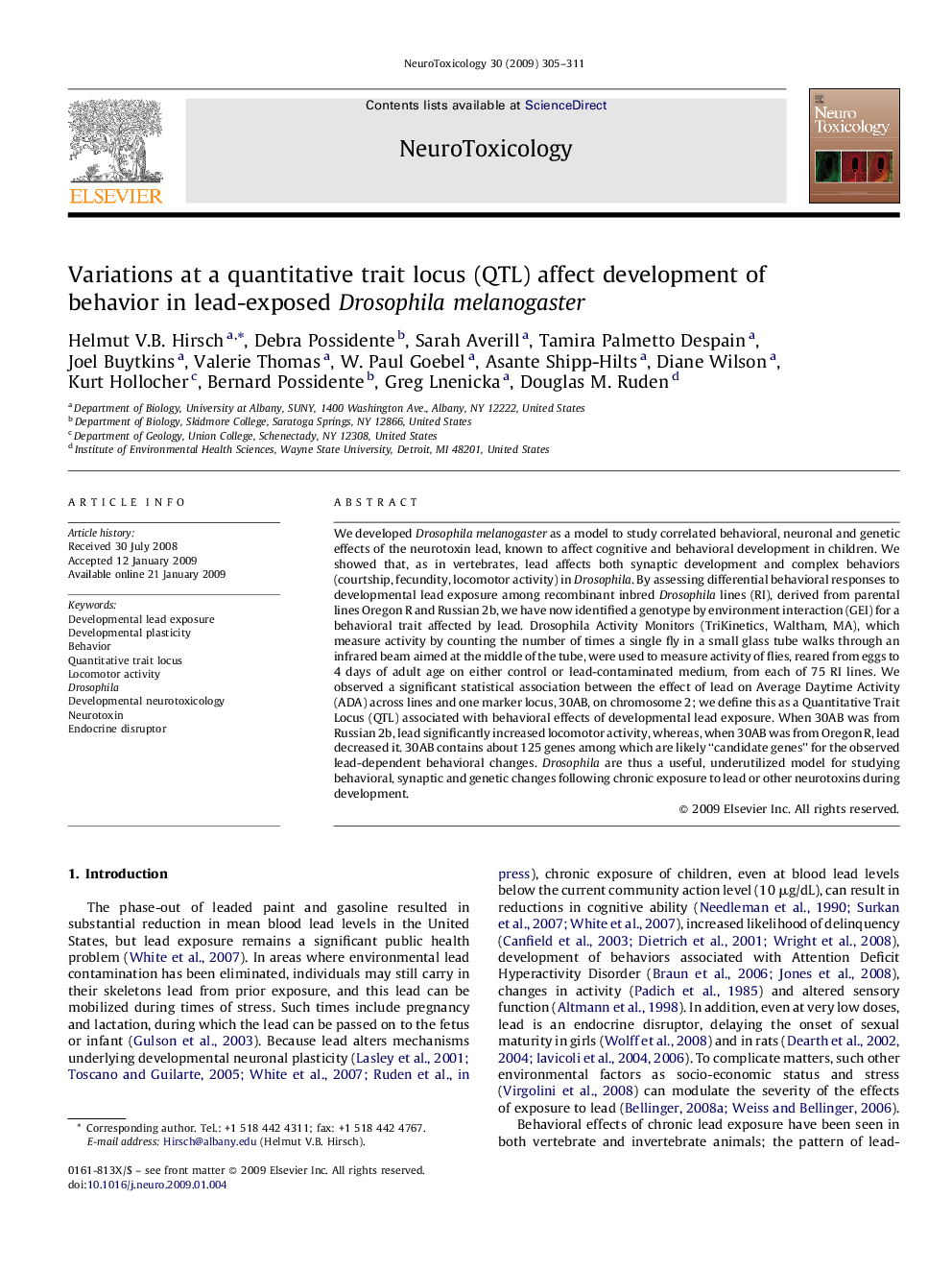| کد مقاله | کد نشریه | سال انتشار | مقاله انگلیسی | نسخه تمام متن |
|---|---|---|---|---|
| 2590249 | 1131730 | 2009 | 7 صفحه PDF | دانلود رایگان |

We developed Drosophila melanogaster as a model to study correlated behavioral, neuronal and genetic effects of the neurotoxin lead, known to affect cognitive and behavioral development in children. We showed that, as in vertebrates, lead affects both synaptic development and complex behaviors (courtship, fecundity, locomotor activity) in Drosophila. By assessing differential behavioral responses to developmental lead exposure among recombinant inbred Drosophila lines (RI), derived from parental lines Oregon R and Russian 2b, we have now identified a genotype by environment interaction (GEI) for a behavioral trait affected by lead. Drosophila Activity Monitors (TriKinetics, Waltham, MA), which measure activity by counting the number of times a single fly in a small glass tube walks through an infrared beam aimed at the middle of the tube, were used to measure activity of flies, reared from eggs to 4 days of adult age on either control or lead-contaminated medium, from each of 75 RI lines. We observed a significant statistical association between the effect of lead on Average Daytime Activity (ADA) across lines and one marker locus, 30AB, on chromosome 2; we define this as a Quantitative Trait Locus (QTL) associated with behavioral effects of developmental lead exposure. When 30AB was from Russian 2b, lead significantly increased locomotor activity, whereas, when 30AB was from Oregon R, lead decreased it. 30AB contains about 125 genes among which are likely “candidate genes” for the observed lead-dependent behavioral changes. Drosophila are thus a useful, underutilized model for studying behavioral, synaptic and genetic changes following chronic exposure to lead or other neurotoxins during development.
Journal: NeuroToxicology - Volume 30, Issue 2, March 2009, Pages 305–311